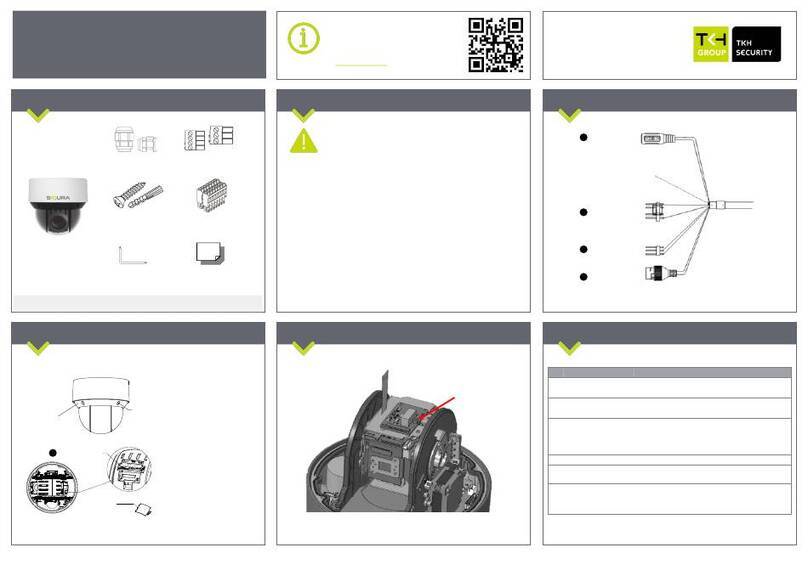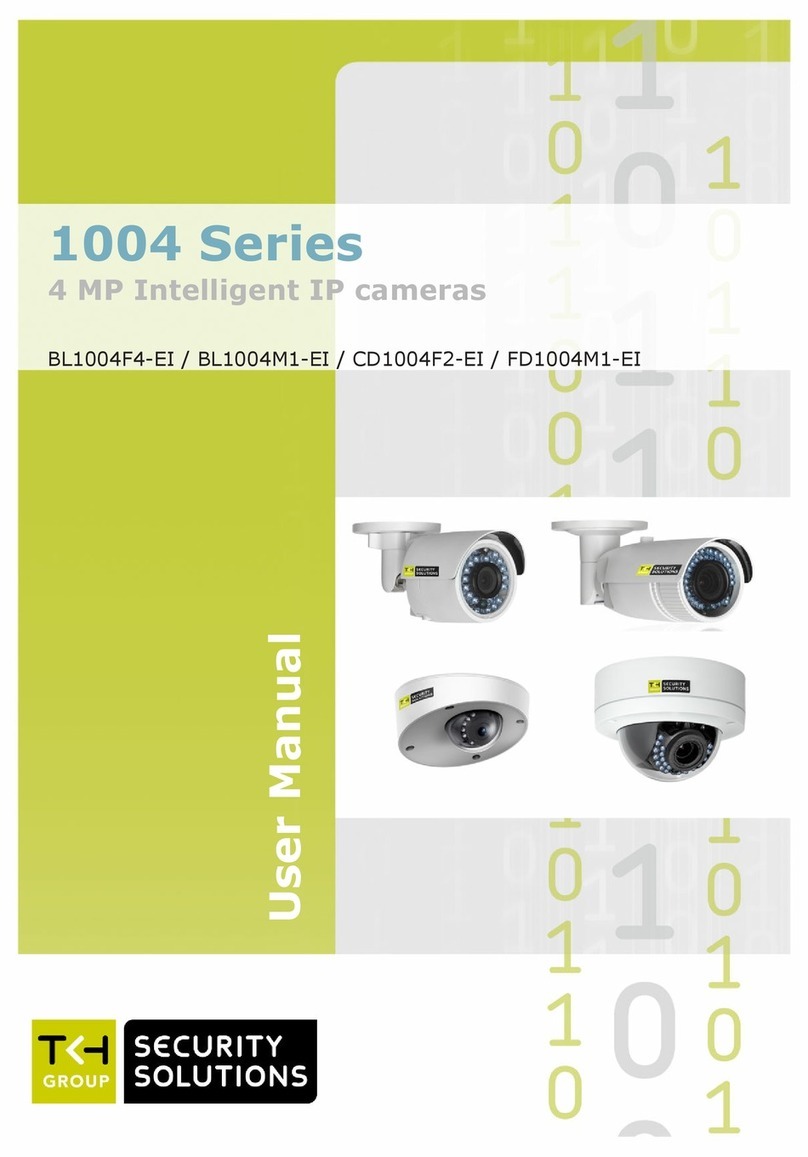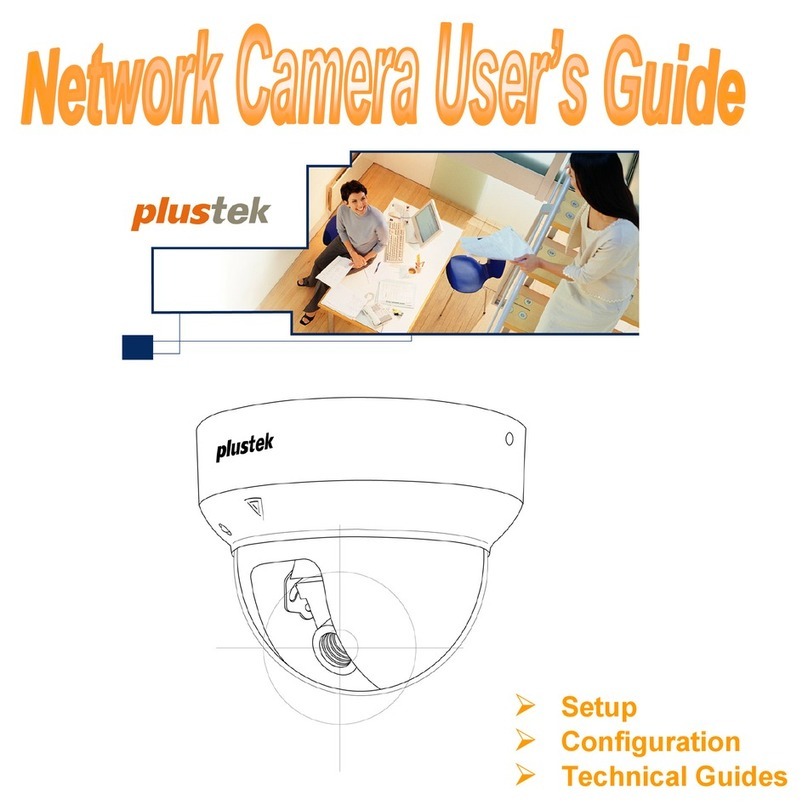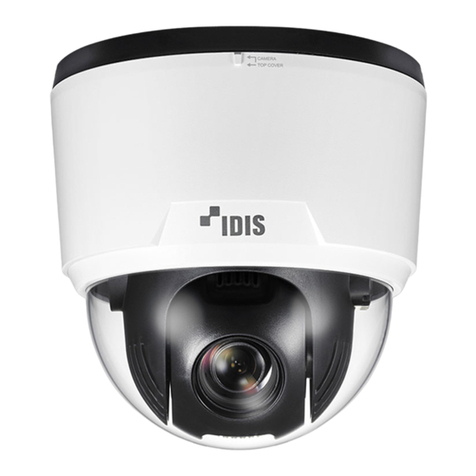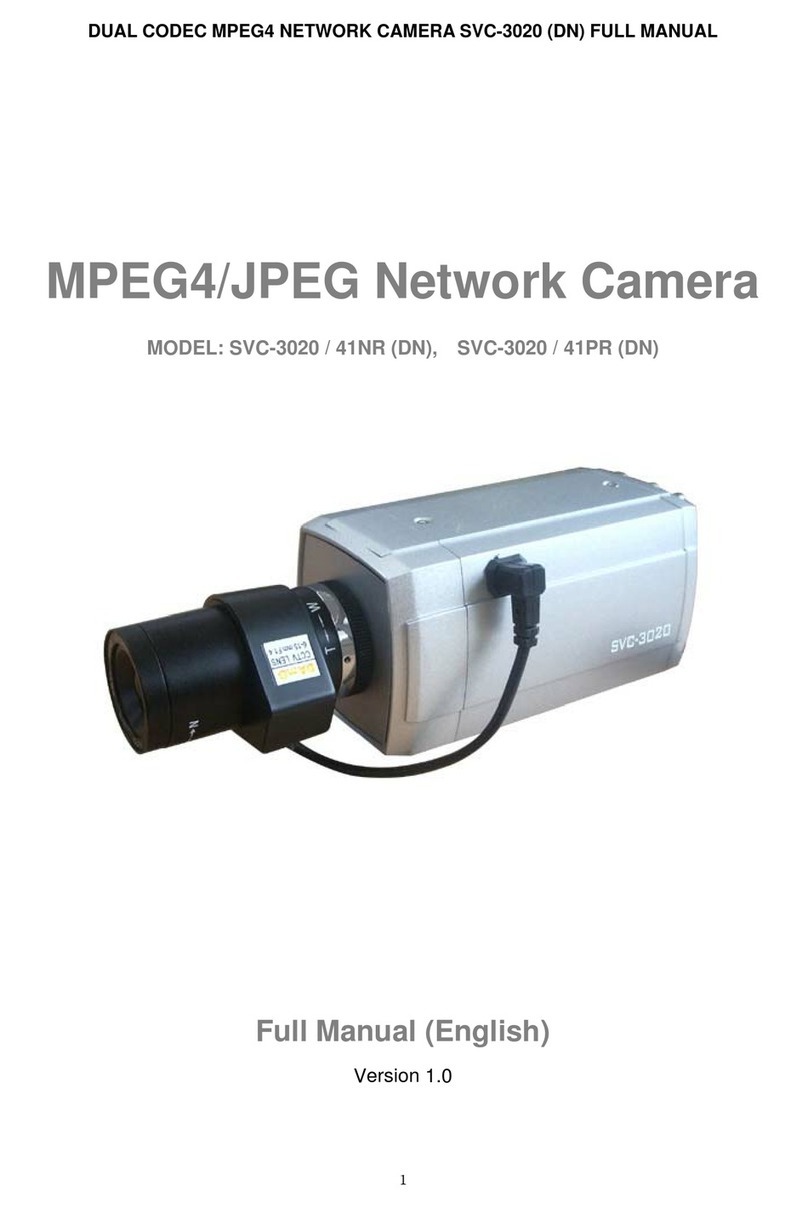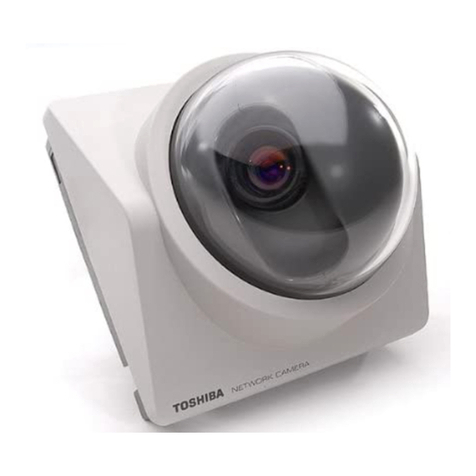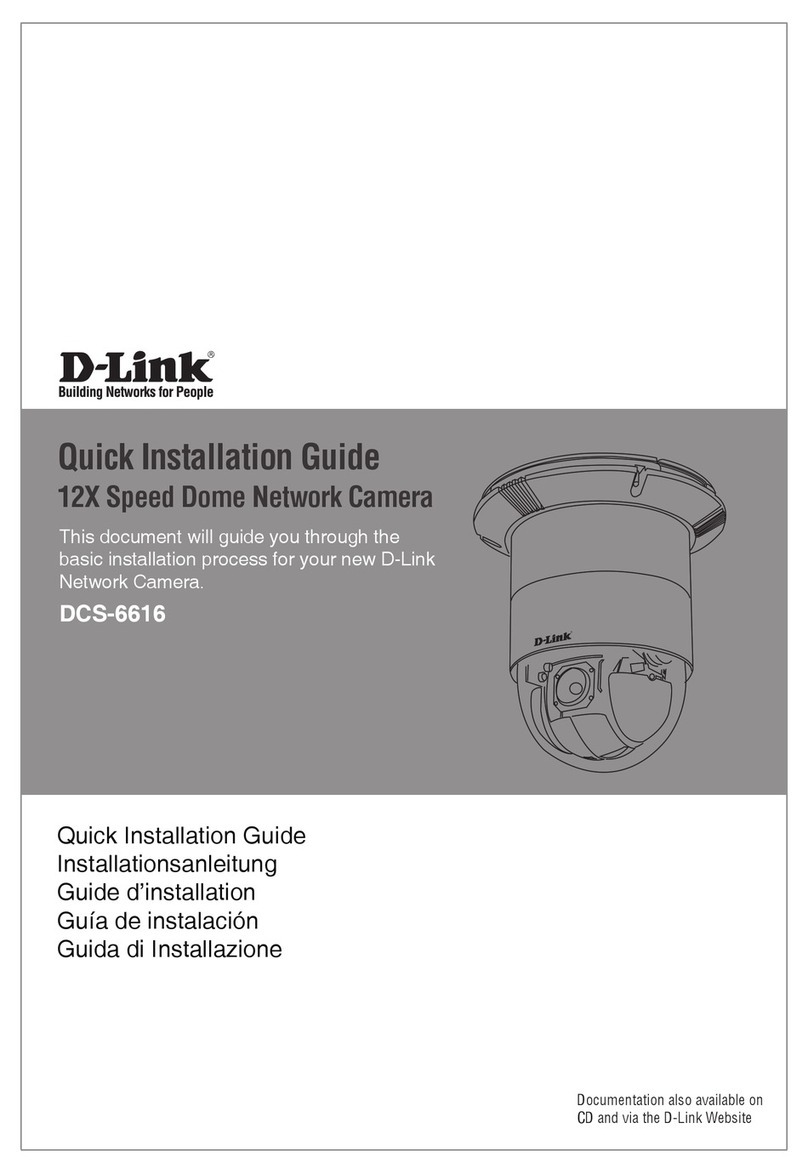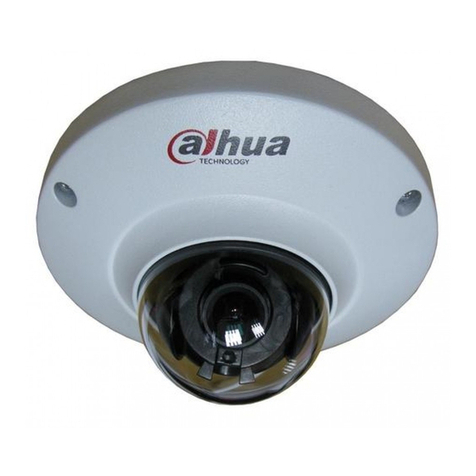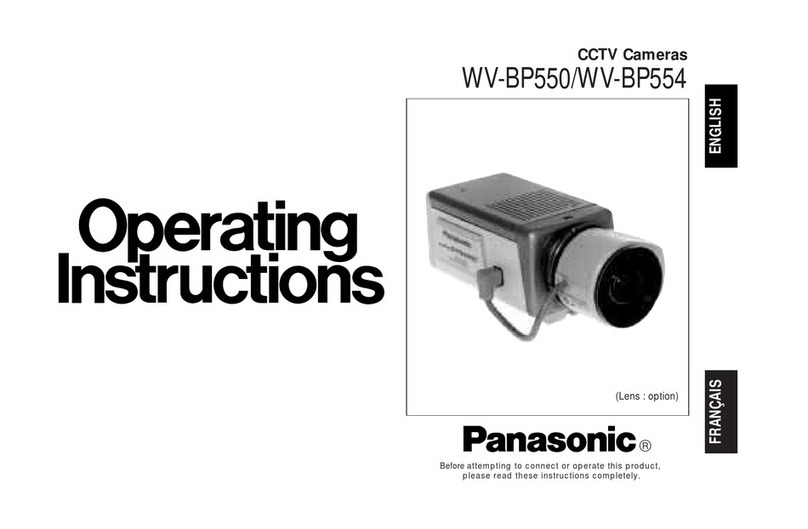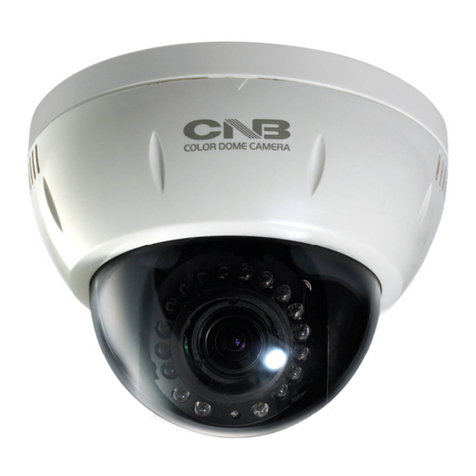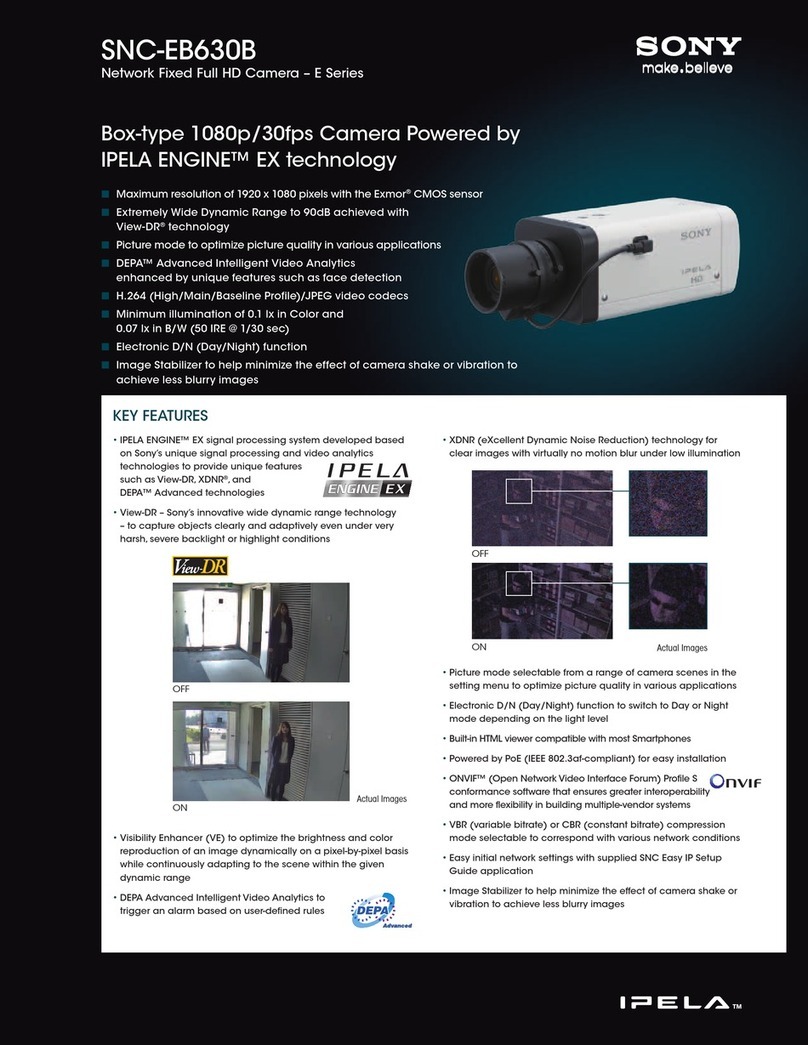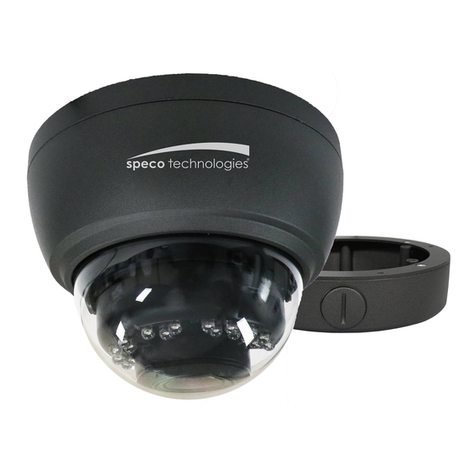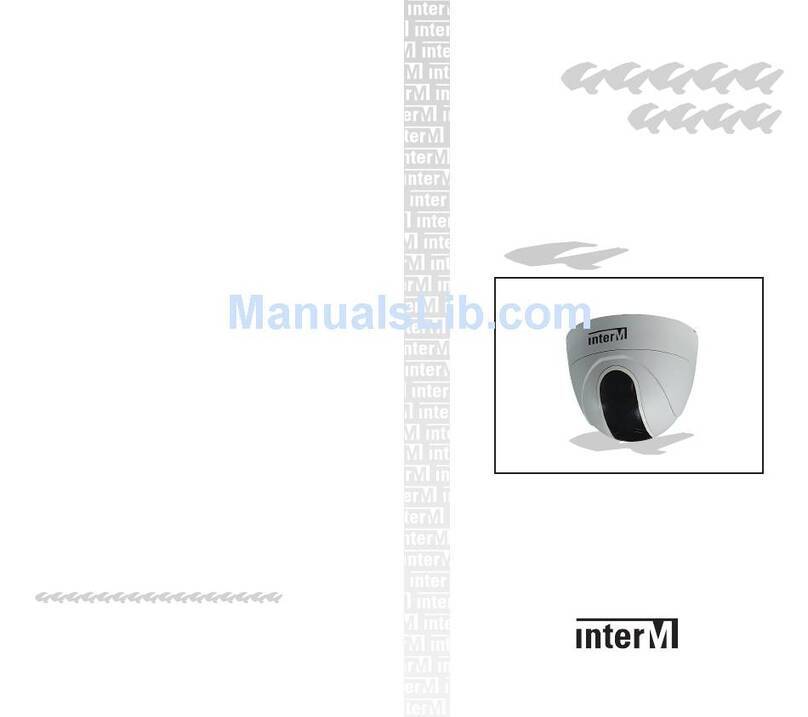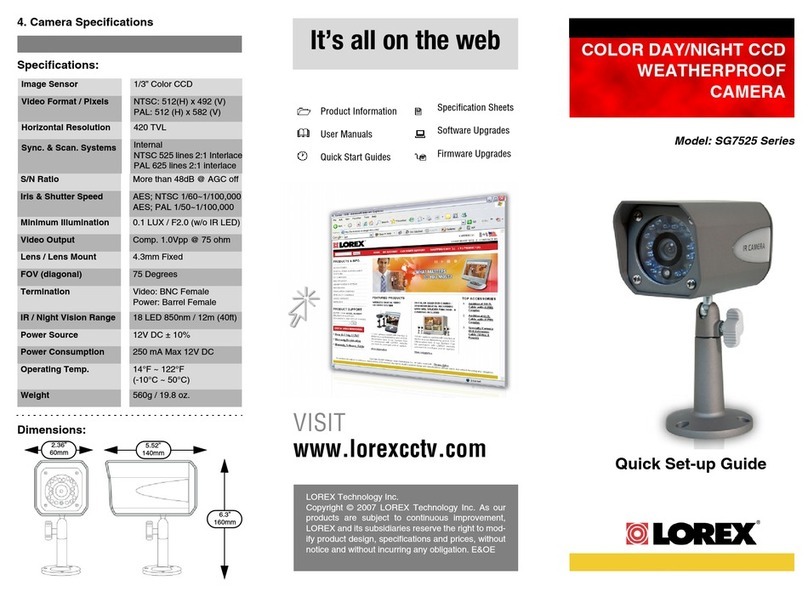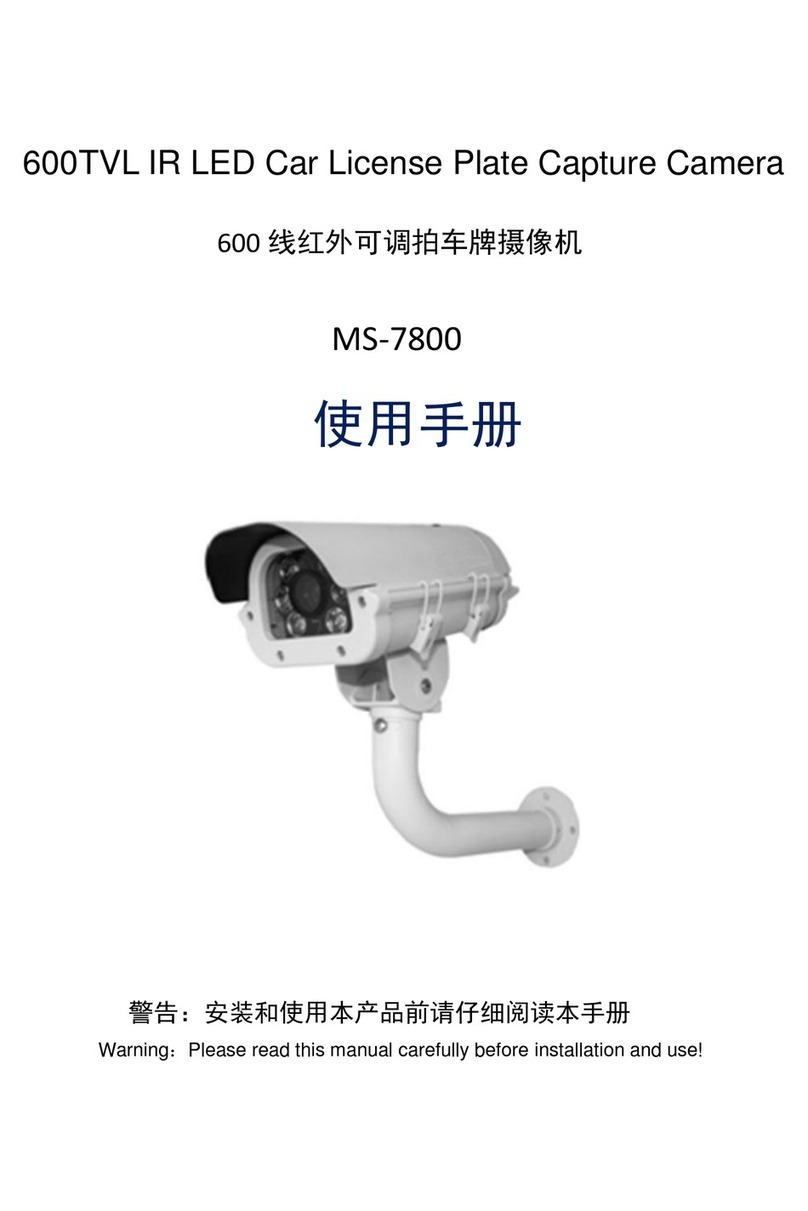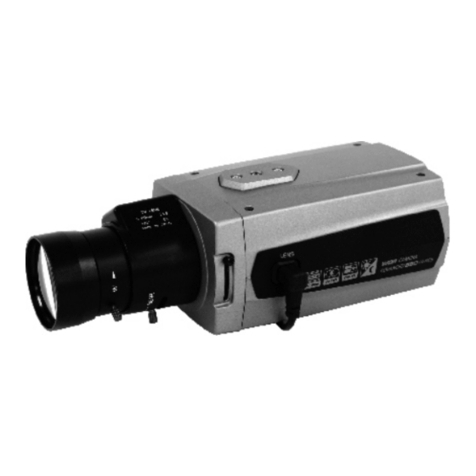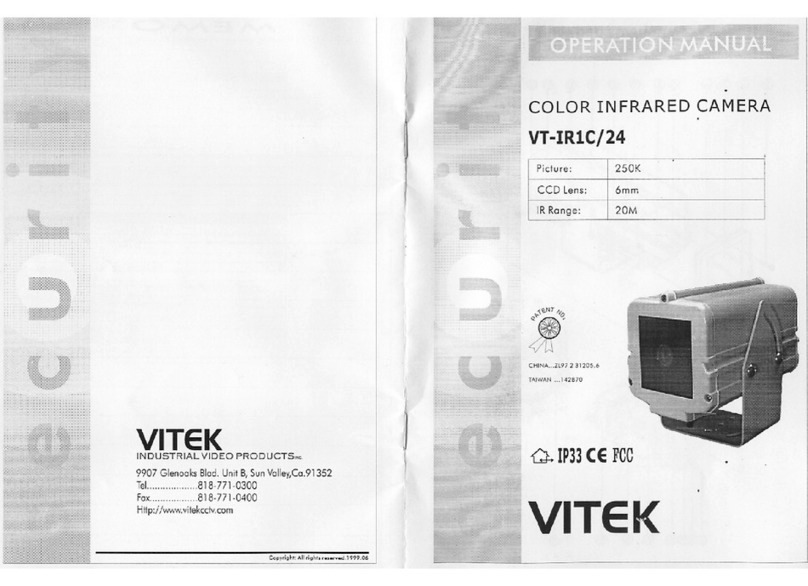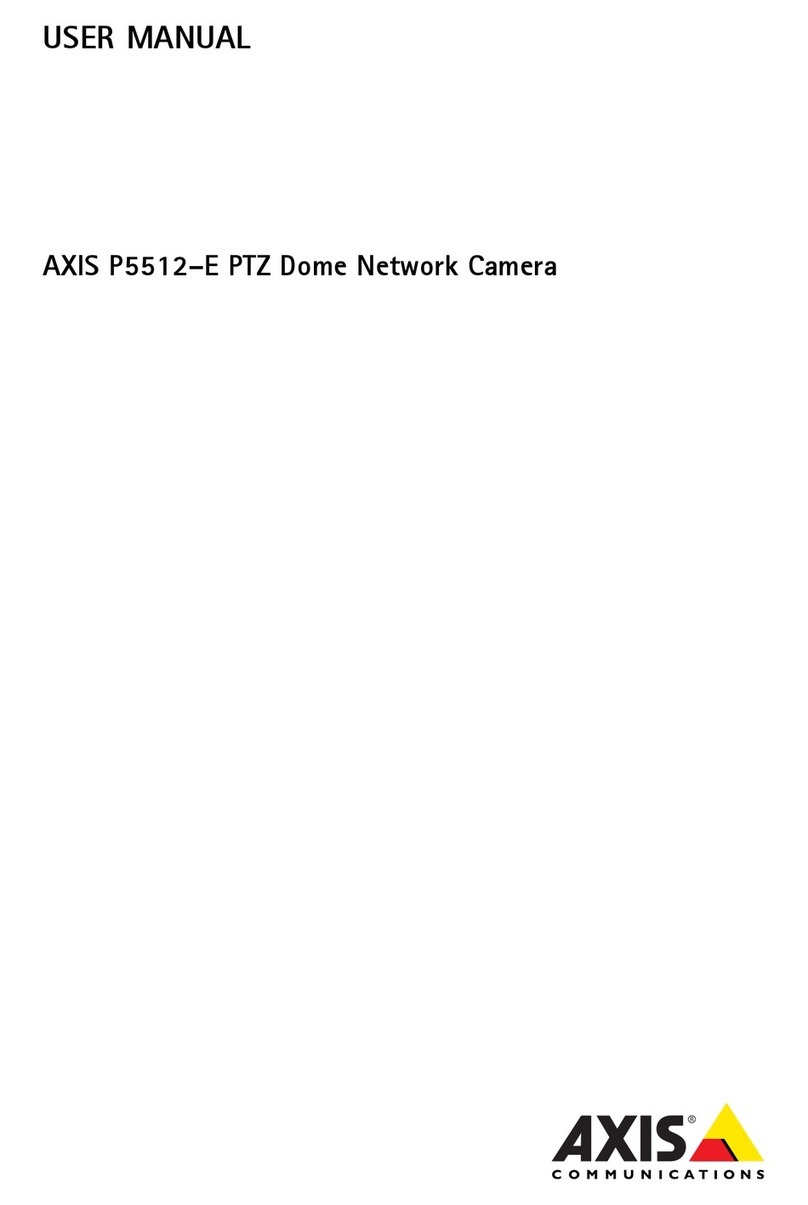TKH EX PTZ Series User manual

TKH
TKH Security | Siqura EX-PD24 | Installation manual 1
EX PTZ Series
Installation manual
Copyright © 2022 TKH Security. Version 4.0.
Ex d 316L PTZ camera station

TKH Security Proposal | RFP Name | RFP Number
TKH Security | Siqura EX PTZ Series | Installation manual v4 2-66
Note: To ensure proper operation, please read this manual thoroughly before
using the product and retain the information for future reference.
Nothing from this publication may be copied, translated, reproduced, and/or published by
means of printing, photocopying, or by any other means without the prior written
permission of TKH Security.
TKH Security reserves the right to modify specifications stated in this manual.
Brand names
Any brand names mentioned in this manual are registered trademarks of their respective
owners.
Liability
TKH Security accepts no liability for claims from third parties arising from improper use
other than that stated in this manual.
Although considerable care has been taken to ensure a correct and suitably
comprehensive description of all relevant product components, this manual may
nonetheless contain errors and inaccuracies. We invite you to offer your suggestions and
comments by email via info@tkhsecurity.com. Your feedback will help us to further improve
our documentation.
How to contact us
If you have any comments or queries concerning any aspect related to the product, do not
hesitate to contact:
TKH Security B.V.
Meridiaan 32
2801 DA Gouda

TKH
TKH Security | Siqura EX PTZ Series | Installation manual v4 3-66
Contents
English
Introduction.........................................................................................................................4
Description..........................................................................................................................5
Before you continue............................................................................................................6
Install the unit......................................................................................................................7
Maintain the unit................................................................................................................17
Technical Data..................................................................................................................19
Dimensions.......................................................................................................................21
ATEX Label.......................................................................................................................22
Appendix: RS-485 Address...............................................................................................24
Appendix: Sync IR with D/N mode ....................................................................................26
Portuguese
Introdução.........................................................................................................................31
Descrição..........................................................................................................................32
Antes de continuar............................................................................................................33
Instale a câmera ...............................................................................................................34
Manter a câmera...............................................................................................................44
Dados Técnicos................................................................................................................46
Dimensões........................................................................................................................47
Rótulo ATEX.....................................................................................................................48
Apêndice: Endereço RS-485.............................................................................................50
Apêndice: Modo Sync IR with D/N ....................................................................................52
Certificates........................................................................................................................54

TKH
TKH Security | Siqura EX PTZ Series | Installation manual v4 4-66
Introduction
Preserve this manual as a reference for future needs.
Used electrical, electronic and stainless steel products should not be
mixed with general waste. For proper treatment, recovery and
recycling of old products, take them to applicable collection points, in
accordance with your national legislation and the Directives
2011/65/EU and 2012/19/EU.
By disposing of these products correctly, you help to save valuable
resources and prevent any potential negative effects on human health
and the environment which could otherwise arise from inappropriate
waste handling. For more information about collection and recycling of
old products, contact your local municipality or your waste disposal
service. Penalties may be applicable for incorrect disposal of this
waste, in accordance with national legislation.
The manufacturer declines all liability for any consequence resulting from improper
installation practices, tampering or improper uses of the product.
The descriptions and illustrations contained in this manual are not binding. The
manufacturer reserves the right to make any alterations deemed appropriate for the
technical, manufacturing and commercial improvement of the product, while leaving the
essential product features unchanged, at any time and without undertaking to update the
present publication.
The manufacturer declines all responsibility for any consequences resulting from improper
use of the product, or use which is different from that expected and specified in the present
documents.

TKH
TKH Security | Siqura EX PTZ Series | Installation manual v4 5-66
Description
The EX PTZ unit is a variable speed stainless steel PTZ camera station specifically
designed for Hazardous Area applications. The design of the unit ensures the best
protection from external agents along with easy installation and maintenance service. EX
PTZ camera stations are equipped with the latest generation zoom module day/night and
thermal imaging cameras, but they are also available for customer-specified cameras.
The EX PTZ (D) camera stations have been designed and certified to the ATEX Directive
2014/34/EU, UKSI 2016:1107 (as amended by 2019:696) and to INMETRO to the
following:
II 2 G Ex db op pr IIC T6 Gb -40°C ≤ Tamb ≤ +60°C
II 2 D Ex tb IIIC T85°C Db -40°C ≤ Tamb ≤ +60°C
II 2 G Ex db op pr IIB T5 Gb -40°C ≤ Tamb ≤ +75°C
II 2 D Ex tb IIIC T100°C Db -40°C ≤ Tamb ≤ +75°C
The EX PTZ D-IR camera stations have been designed and certified to the ATEX Directive
2014/34/EU, UKSI 2016:1107 (as amended by 2019:696) and to INMETRO to the
following:
II 2 G Ex db op is op pr IIC T5 Gb -40°C ≤ Tamb ≤ +40°C
II 2 D Ex tb op is IIIC T100°C Db -40°C ≤ Tamb ≤ +40°C
II 2 G Ex db op is op pr IIB T4 Gb -40°C ≤ Tamb ≤ +60°C
II 2 D Ex tb op is IIIC T135°C Db -40°C ≤ Tamb ≤ +60°C
The surface temperature class of the device was determined only with ambient air
temperature, without taking into consideration direct sunlight. The IP rating of the unit is
IP66/IP67.
This product must only be installed by suitably trained personnel in accordance with the
relevant code of practice (e.g., EN60079-14). These instructions are intended for their sole
use.
CAUTION:
It is recommended to use proper certified cable glands and connection cables

TKH
TKH Security | Siqura EX PTZ Series | Installation manual v4 6-66
Before you continue
Prior to installation and operation, carefully read all instructions in this manual and heed
all warnings.
Unpack this equipment and handle it carefully. If the package appears to be damaged,
notify the shipper immediately.
Use the original packaging to transport the unit. Disconnect power supply before moving
it. In case of returning the equipment, the original packaging must be used.
Any change performed on the unit that is not previously approved by the manufacturer
will void both the certification and the warranty.
Trying to manually force the wiper will result in damaging the device and will void the
warranty.
Fasteners used for the assembly shall be M5-08x12 grade A4-70. -Tightening/loosening
screws using automatic tools (such as drill drivers) may result in damaged threads.
After the installation of the unit, the desiccant bag must be placed inside the Pan & Tilt
unit, assuring it won't be damaged by rotating and moving parts.
All the electrical connections should be realized in a non-explosive atmosphere.
Before performing any operation, turn off the power. The installation of the unit can be
performed only by qualified personnel in accordance with the relevant code of practice
(e.g., EN60079-14) and with all the relevant local and national standards including but
not limited to the use of special pipes, tapes, sealants, cables and glands.
For security reasons, do not install the unit in the proximity of water containers and
never push objects or pour liquids into the unit. The unit can be safely used in damp
environments or outdoors, as long as the glands are properly sealed.
When leaving the unit unused for long periods, disconnect supply cables.
The internal transformer of the unit should never be used to power external devices.
Connecting GND/Earth/PE to line or neutral will result in damaging the device and will
void the warranty.
No ventilation is needed for the unit, as it is completely sealed.
When a optical fiber cable is used on the equipment it shall be suitably protected
against mechanical damage external to the equipment (wire armored cable, fitted in
conduit, within a cable tray, etc.).
The camera must be installed so that the risk of impact with the glass window is low.

TKH
TKH Security | Siqura EX PTZ Series | Installation manual v4 7-66
Install the unit
Any action performed on the unit which is not described in this manual may damage it.
Make sure that the installation surface can support at least four times the weight of the
unit in normal operating conditions. In case of excessive external stress (vibration,
strong winds or impact, for example), the equipment may need additional means of
protection.
The PTZ camera station is designed to be mounted in a upright position only (camera-
tube on top). Operation in any other than upright mounting position may cause failures
not covered by its warranty and certification.
Proper stainless steel hardware should be carefully chosen to fasten the unit to the
surfaces. Proper tools should be used during the installation, in accordance to
environmental requirements.
Use caution when lifting and assembling the unit. It is recommended that non-slip
protective gloves be worn during installation. The unit could bear sharp edges.
WARNING: Hazardous moving parts: the device is remotely controlled and may change
position at any time. When installing, choose a place where moving parts cannot hit
anyone or any object, creating hazardous situations.
Open only the covers pointed out in this installation manual. Other covers should be
opened only by the manufacturer.
Electrical connections (such as plugs and cords) must be protected from potential
hazardous environmental factors (e.g. foot traffic, hitting objects).
Pointing the camera at the sun may damage it.
Use appropriate tools for the purpose. The particular nature of the site where the device
is to be installed may require special tools for installation.
Preset Call 99 calibrates the Camera Pots in case of a motorized lens (needed the first
time the camera is connected)
The equipment is not designed for 24/7 continuous pan and/or tilt movement. Wearing
the motors may result in premature pan or tilt failure, not covered by its warranty.

TKH Security Proposal | RFP Name | RFP Number
TKH Security | Siqura EX PTZ Series | Installation manual v4 8-66
Carefully check the supply voltage marked on the label. An incorrect power supply
voltage may damage the unit. Do not overload the terminal connection, as it may cause
a fire or electrical shock hazard.
Earth ground attachment point is a stud M4-0.7 x16 A4-70 ISO 4762 with dual nut and
dual serrated washer.
During installation it is important to connect it to an appropriate grounding location using
a (minimum) 6 mm2 (10 AWG) copper stranded wire.
An all-pole mains switch with an opening distance between the contacts at least 3 mm
in each pole must be incorporated in the electrical installation. The switch must be
equipped with protection against the fault current towards the ground (differential) and
the overcurrent (magnetothermal, maximum 15 A). Recommended for 115 Vac / 230
Vac: 2 A Delayed Fuse T (Time delay) or equivalent resettable devices such as
magnetothermal. Recommended for 24 Vac: 4 A Delayed Fuse T (Time delay) or
equivalent resettable devices such as magnetothermal. These ratings include inrush
current for startup or temporary overload. It must be very quickly recognizable and
readily accessible. Install a suitable overcurrent protection.
For connection to the mains, use a multipolar cable having minimum 3x1,5 mm2(15
AWG). The mains cable must be protected.
Fasten all the cables inside the housing with cables ties or other fixing means to avoid
the electrical contact with surrounding parts in case cables get loose.
Make sure that the unit case is properly earthed, connecting all the earth ground studs.
Earth cable should be about 10 mm longer than the other cables on the connector, in
such way that it will not be accidentally disconnected if the cable is stretched or pulled.
Do not connect the unit to a supply circuit unless the installation is completed.
To maintain the certification requirements and the IP rating of the unit, adequate
certified cable glands must be used. Each unused cable gland hole must be closed
using a proper plug suitable for the housing marking.
Make sure the threads of the unit are free of dirt and debris. A minimum of 10 mm depth
and 5 threads of engagement must be maintained for all threaded holes.
Check the proper position of the O-ring seals in their groove.
Keep the unit tightly closed when operating.
Disconnect the equipment from the supply circuit and wait at least five minutes before
opening.
It is strongly advised to perform and test all the connections on a safe area laboratory
before installing on field.
Remove the protective PVC sheet from the sunshield in a non-explosive atmosphere
before installation
The EX PTZ D-IR emits an high intensity IR light. Wear protective eyewear. Avoid direct
eye and skin exposure. Please follow safety precautions given in IEC 60825-1 and IEC
62471.

TKH Security Proposal | RFP Name | RFP Number
TKH Security | Siqura EX PTZ Series | Installation manual v4 9-66
Installation procedure
1. Install the nozzle bracket*
*Only on CR versions with washer system
2. Attach sunshield
Attach the sunshield to the housing using the screw and the spacer provided in the
kit according to the image. Remove the protective PVC sheet from the sunshield in a
non-explosive atmosphere before installation
3. Open the housing
Extract the front flange by removing the eight screws. Be careful not to lose the O-
Ring.

TKH Security Proposal | RFP Name | RFP Number
TKH Security | Siqura EX PTZ Series | Installation manual v4 10-66
4. Extract the unit
Slide the upper rail away from the lower rail.
Be careful not to damage the wiring
5. Perform connections in base junction box
Open the base junction box of the unit by removing the screws on the base top
cover.
Perform the electrical connections on the MF_RTX interface board:
oSupply voltage (on "LINE" connector: line on L pin and neutral on N pin)
oVideo output and/or network connector
Prevent damaging
interconnecting cables
and make sure all
connectors are tightened.
MF_RTX interface board

TKH Security Proposal | RFP Name | RFP Number
TKH Security | Siqura EX PTZ Series | Installation manual v4 11-66
Connections through the plug-in blocks are made at the factory, while screw terminal
blocks are used for the field installation. It must be noted that each plug-in connector is
different in shape and/or color to avoid any wrong connection. The connections should be
performed as described below.
Field installation
ID
Name
Notes
M1
Supply voltage
Depending on model: 24 V~ 50/60 Hz, 115 V~
50/60 Hz, or 230 V~ 50/60Hz. Maximum current
required: 5 A.
PE (Protection Earth) must be connected.
M4
Data input (RS-485)
Standard: Pelco D Protocol to control TKH
Security telemetry receivers.
M6
Auxiliary DC output
12 V . Max: 0,4 A. Any connection of this Aux
must be performed inside the base junction box.
M7
Auxiliary AC output
Designed to activate washer systems. Generally
activated via AUX 2 in Pelco D. The activation
lasts 5 seconds.
M9
Auxiliary data input
If needed, contact TKH Security for further
information.
CN2
Ethernet
Signal out and/or POE supply voltage. Use
shielded or unshielded cable according to the
needs.
CH1_OUT
Analogue output
Use a high-quality coaxial cable with a shielded
BNC connector. (Not used)

TKH Security Proposal | RFP Name | RFP Number
TKH Security | Siqura EX PTZ Series | Installation manual v4 12-66
For camera alarm I/O (optional), use the white connector attached to four wires protruding
from the printed circuit board. A mating (male) connector is included in the package
contents of the camera. Refer to the table below for the wiring scheme.
Alarm I/O wiring
Function
Wire color
Alarm O+
white/red
Alarm O–
white/orange
Alarm I+
white/yellow
Alarm I–
white/green
Connectors performed at the factory
ID
Name
Notes
M3
Supply voltage
Supply voltage for telemetry receiver and any 24
V~ device inside the unit.
M5
RS-485 bus
Communication bus (RS-485) for telemetry
receiver. This provides the auxiliary DC output
(M7).
M8
Auxiliary AC output
Auxiliary AC output connected to AUX 2 of
telemetry receiver
CN1
Ethernet
Signal and/or POE supply voltage.
CH1_IN
Analogue output
Analogue video connected to the camera.
CN3
Auxiliary connector
Used for internal connections.
CN4
Same as above
Used for internal connections.
6. Fuse values
The following fuse values are used, depending on the supply voltage:
24 V~ or 115 V~ supply voltage
230 V~ supply voltage
Fuse name
Fuse value
Fuse name
Fuse value
F1
10 A T 250 V~ 5x20
F1
6,3 A T 250 V~ 5x20
F2
10 A T 250 V~ 5x20
F2
10 A T 250 V~ 5x20
All fuses must be T type (time lag). Different supply voltage can be supplied and may
require different fuse values. In such cases, please contact TKH Security.

TKH Security Proposal | RFP Name | RFP Number
TKH Security | Siqura EX PTZ Series | Installation manual v4 13-66
7. PTZ installation
This step describes the pan and tilt receiver which is integrated in the PTZ camera station
for RS-485 communication.
The 8-way dip switch (DS1) on the telemetry receiver
can be used to set up the unit address (binary). When
a switch is on the ON position, the relative digit has
value 1, otherwise the value is 0. Switch 1 is referred
to the least significant digit (20), while switch 8 is
referred to the most significant digit (27).
For example, the address 13 (00001101 in binary) can be set up turning ON the switch 1, 3
and 4 (see figure).
The default address is 1.
Default limits
The unit is set with default values to achieve the following angles: +/- 90° Pan (left/right);
+/- 90° Tilt (up/down). CR versions do not have default pan limits. Factory limits are about
+/- 175° Pan (left/right) and +/- 100° Tilt (up/down). CR versions do not have factory pan
limits.
Change the default limits
Warning: Setting the Pan limits (set 80 and 81) will delete all the pan saved presets.
Pan and tilt receiver
Left Limit
Preset
Set 70
Clear
limit
Preset
Set 80
Set
limit
Right Limit
Preset
Set 71
Clear
limit
Preset
Set 81
Set
limit
Up Limit
Preset
Set 72
Clear
limit
Preset
Set 82
Set
limit
Down Limit
Preset
Set 73
Clear
limit
Preset
Set 83
Set
limit

TKH Security Proposal | RFP Name | RFP Number
TKH Security | Siqura EX PTZ Series | Installation manual v4 14-66
Presets
Presets from 1 to 69 and from 100 to 150 can be used to set/call specific positions. The
other presets are factory‑reserved and cannot be used to set/call specific positions.
On the first command received, the unit will perform a zero-axis (in which the unit will not
accept any further command). Setting preset 84 changes this behavior and makes the unit
perform the zero-axis on startup. Setting preset 74 switches back the behavior of the unit to
perform the zero-axis on the first command received after the startup.
Presets 88 to 99, using command [GO TO PRESET] are reserved for:
Special features (auto clear function, etc.)
Queries (example position, address code, temperature, alarm, etc.)
Special settings
8. Close the unit
Fix the cable glands according to the manufacturer's instructions.
When all the connections are performed, close the unit.
A minimum of 10 mm depth and 5 threads of engagement must be maintained for all
threaded holes.
Carefully check the proper position of the O-rings in their groove.
Preset
Function
Preset 88
Auxiliary output AUX1 (Wiper) is enabled (auto off after 10 seconds).
Preset 89
Auxiliary output AUX2 (Washer) is enabled (auto off after 5 seconds).
Preset 90
PAN zero axis.
Preset 91
TILT zero axis.
Preset 92
PAN and TILT zero axis.
Preset 93
Go to zero position (0°) with both PAN and TILT axis.
Preset 94
This command does not interrupt the on-going operation. It gives back:
the Firmware Version, the Unit address, the Unit temperature, and
Alarms.
Preset 95
This command does not interrupt the on-going operation. It gives back:
the Unit address, the Actual preset position number, the PAN position,
and the TILT position.
Preset 99
Preset Call 99 calibrates the Camera Pots (needed the first time the
camera is connected).
Preset 200
Preset Call 200 activates the front window cleaning cycle on versions
with washer systems.

TKH Security Proposal | RFP Name | RFP Number
TKH Security | Siqura EX PTZ Series | Installation manual v4 15-66
9. IR LED illuminator (PTZ D-IR only)
Pin
Pin
M1
1
GND
M4
1
Not connected
2
24V~/V⎓(V2/-)
2
Not connected
3
24V~/V⎓(V1/+)
M5
1
+12V⎓AUX
M2
1
IR LEDs (V+)
2
0V⎓AUX
2
IR LEDs (V-)
M6
1
IN cmd START C+ or Dry contact
3
Light sensor photocell C +
2
IN cmd START E- or Dry contact
4
Light sensor photocell E -
M3
1
OUT Day&Night_COM
photorelay
2
OUT Day&Night_NO photorelay
3
IN cmd STROBO C+
4
IN cmd STROBO E-
Connector
Name
Notes
M1
AC/DC Power supply Input
-
M2
IR LEDs power & Light
sensor photocell
Supply voltage to the IR LEDs & external Light
sensor photocell signal
M3
Day&Night photorelay
Output signal for day/night mode (night=ON,
day=OFF).
M4
Factory Reserved
Not connected
M5
DC output
For auxiliary equipment: do not exceed 0.1A
M6
Inputs
Dry contact/Open collector (NPN) input for IR LEDs
activation (Example: external camera output)

TKH Security Proposal | RFP Name | RFP Number
TKH Security | Siqura EX PTZ Series | Installation manual v4 16-66
IR LED calibration and settings
The IR01 board installed inside the IR LED illuminator is equipped with four LEDs. The DL1
LED (green) is on when the board is correctly powered. The DL2 LED (yellow) is on when the
IR LEDs are interrupted (open-led). The DL3 LED (red) is on when the IR LEDs are not
activated or when the IR LEDs are in short-circuit if activated. The DL4 LED (yellow) is on
when the IR LEDs are in the activation phase during its hysteresis delay-time.
S1 button is used for manual IR LEDs activation test.
TR3 trimmer is used for adjusting the sensitivity of the light sensor photocell.
Counter clockwise rotation decreases sensitivity. Clockwise rotation increases it.
Setting it to 0 disable the activation from light sensor photocell.
J6 jumper is used for instant or delayed IR LEDs Activation.
Connection between 1 and 2 triggers on hysteresis delayed activation and deactivation (in this
case, DL4 shows the delayed phase). Connection between 2 and 3 triggers on instant
activation and deactivation (in this case, DL4 is always OFF).

TKH
TKH Security | Siqura EX PTZ Series | Installation manual v4 17-66
Maintain the unit
Please read and be familiar with the following instructions before servicing the
unit.
Ensure proper operating condition of the unit performing safety checks upon
completion of maintenance.
Disconnect the unit from the supply circuit before cleaning. Do not use caustic
or abrasive cleaning products.
Use only replacement parts specified by the manufacturer.
Inspection and maintenance of the equipment must be carried out in
accordance with the applicable standards (i.e. EN 60079-17). Repair of the
equipment must be carried out in accordance with the applicable standards (i.e.
EN 60079-19).
Disconnect the unit from the supply circuit and report to qualified service
personnel whenever any damage or deformation to the equipment has been
detected.
Do not use electrical equipment that seems worn or old.
Inspections
This equipment has been designed to fit in harsh environments requiring little or no
maintenance. Suggested inspection interval is six months, but extremely harsh
environments may require more frequent inspection and maintenance checks. On each
inspection, check the O-ring seals and the window wiper blade integrity. Replace them if
necessary. On each inspection check the drive motors and the adequate
lubrication/greasing of the gears. Apply lubricant/grease if necessary.
Routine activities
Regularly perform the following routine activities:
Clean the glass
Use water or a liquid detergent that will not generate a hazardous situation.
Clean the germanium window
Remove the protective guard, unscrewing the screws using a no-sparking hex
wrench. Use water or a liquid detergent that will not generate a hazardous situation.
Be careful not to scratch the carbon coating. Do not use ethyl alcohol, solvents,
hydrogenated hydrocarbons, strong acids or alkalis. This will irreparably damage the
germanium window. Once completed the cleaning, properly reassemble the
protective guard.

TKH Security Proposal | RFP Name | RFP Number
TKH Security | Siqura EX PTZ Series | Installation manual v4 18-66
Clean the unit
The layer of filth upon the unit should never exceed 5 mm thickness. Use a dry or
damp cloth. Do not use compressed air to clean the unit.
Check electrical connections
Check cables and electrical connections for integrity and tightness. If the cables
seem worn or damaged, refer to the Extraordinary maintenance section.
Check mounting accessories
Check mounting bolts and screws for integrity and tightness. Replace or tighten any
damaged/loose mounting hardware.
Extraordinary maintenance
Any intervention which is not listed in the Routine activities list must be done in absence of
potentially explosive atmosphere. Any repair or part replacement must be done by, or
under supervision of TKH Security. Use only original spare parts. The manufacturer
declines all liability for any damage resulting from tampering, use of non-original spare
parts and service carried out without following the directives of the present manual.
If the equipment is likely to come into contact with aggressive substances, then it is the
responsibility of the user to take suitable precautions that prevent it from being adversely
affected, thus ensuring that the type of protection is not compromised.
Aggressive substances: acidic liquids or gases that may attack metals, or solvents that
may affect polymeric materials.
Suitable precautions: regular checks as part of routine inspections or establishing from the
material’s datasheet that it is resistant to specific chemicals.

TKH
TKH Security | Siqura EX PTZ Series | Installation manual v4 19-66
Technical Data
Mechanical
Construction
AISI316L Stainless Steel
Finish
Electro-polished
Pan
Angle: 350° (+/- 175° or continuous rotation); Speed: up to
40°/second peak; Torque: 80 Nm
Tilt
Angle: 180° (+/- 90°); Speed: up to 20°/second peak; Torque:
107 Nm
Maximum load
25 kg
Cable entries
M25x1.5
Electrical
Thermostatically
controlled heater
T[°C] ON = 12 ± 4 °C, T[°C] OFF = 20 ± 3 °C
Supply voltage
24 V~ 50/60 Hz, 115 V~ 50/60 Hz, 230 V~ 50/60 Hz
Power consumption
95 W Max (120 W Max for EX PTZ D)
Certifications EX PTZ and EX PTZ D
Weatherproof standard
IP66/IP67
Rating
II 2 G Ex db op pr IIC T6 Gb -40°C ≤ Tamb ≤ +60°C
II 2 D Ex tb IIIC T85°C Db -40°C ≤ Tamb ≤ +60°C
II 2 G Ex db op pr IIB T5 Gb -40°C ≤ Tamb ≤ +75°C
II 2 D Ex tb IIIC T100°C Db -40°C ≤ Tamb ≤75°C
ATEX Standards
EN 60079-0:2018; EN 60079-1:2014;
EN 60079-28:2015; EN 60079-31:2014
IECEx Standards
IEC 60079-0:2017; IEC 60079-1:2014-06;
IEC 60079-28:2015; IEC 60079-31:2013
INMETRO
ABNT NBR IEC 60079-0; ABNT NBR IEC 60079-1;
ABNT NBR IEC 60079-28; ABNT NBR IEC 60079-31
UKEX
UKSI 2016:1107 (as amended by UKSI 2019:696)
Schedule 3A, Part 2
Compliancy
CE, UKCA, INMETRO

TKH Security Proposal | RFP Name | RFP Number
TKH Security | Siqura EX PTZ Series | Installation manual v4 20-66
EX PTZ and EX PTZ D
Certifications EX PTZ D-IR
Weatherproof standard
IP66/IP67
Rating
II 2 G Ex db op is op pr IIC T5 Gb -40°C ≤ Tamb ≤ +40°C
II 2 D Ex tb op is IIIC T100°C Db -40°C ≤ Tamb ≤ +40°C
II 2 G Ex db op is op pr IIB T4 Gb -40°C ≤ Tamb ≤ +60°C
II 2 D Ex tb op is IIIC T135°C Db -40°C ≤ Tamb ≤ +60°C
ATEX Standards
EN 60079-0:2018; EN 60079-1:2014;
EN 60079-28:2015; EN 60079-31:2014
IECEx Standards
IEC 60079-0:2017; IEC 60079-1:2014-06;
IEC 60079-28:2015; IEC 60079-31:2013
INMETRO
ABNT NBR IEC 60079-0; ABNT NBR IEC 60079-1;
ABNT NBR IEC 60079-28; ABNT NBR IEC 60079-31
UKEX
UKSI 2016:1107 (as amended by UKSI 2019:696)
Schedule 3A, Part 2
Compliancy
CE, UKCA, INMETRO
Table of contents
Languages:
Other TKH Security Camera manuals
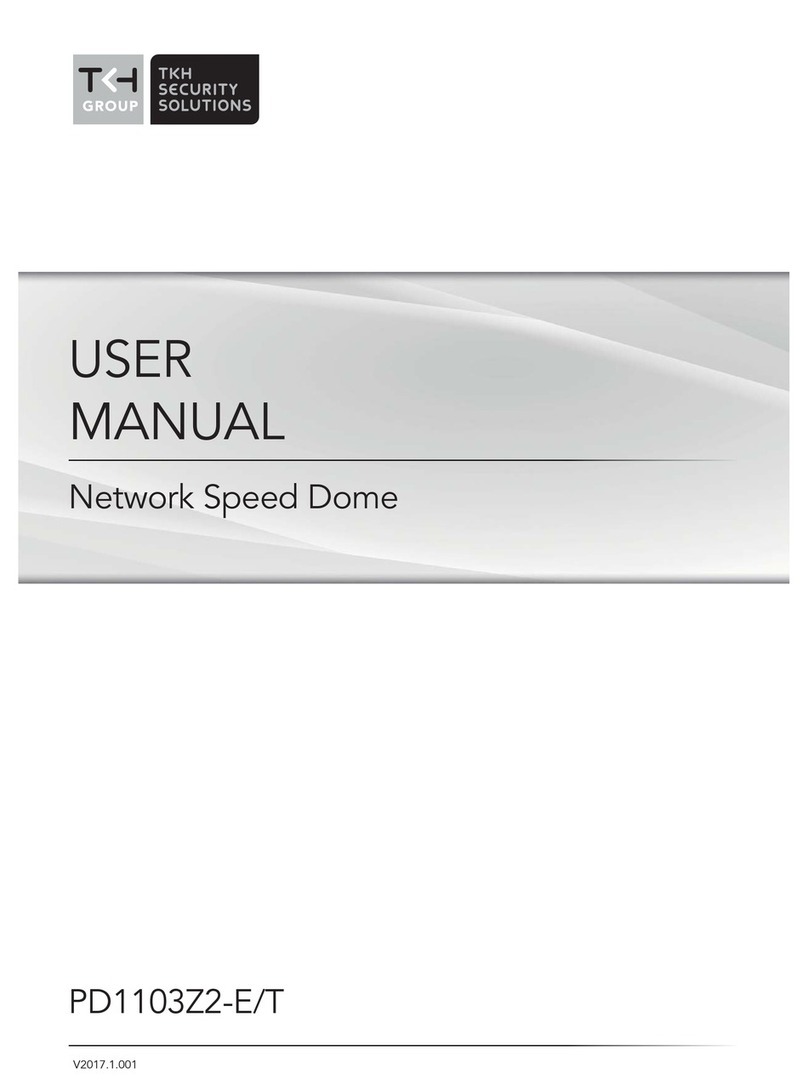
TKH
TKH PD1103Z2-E User manual
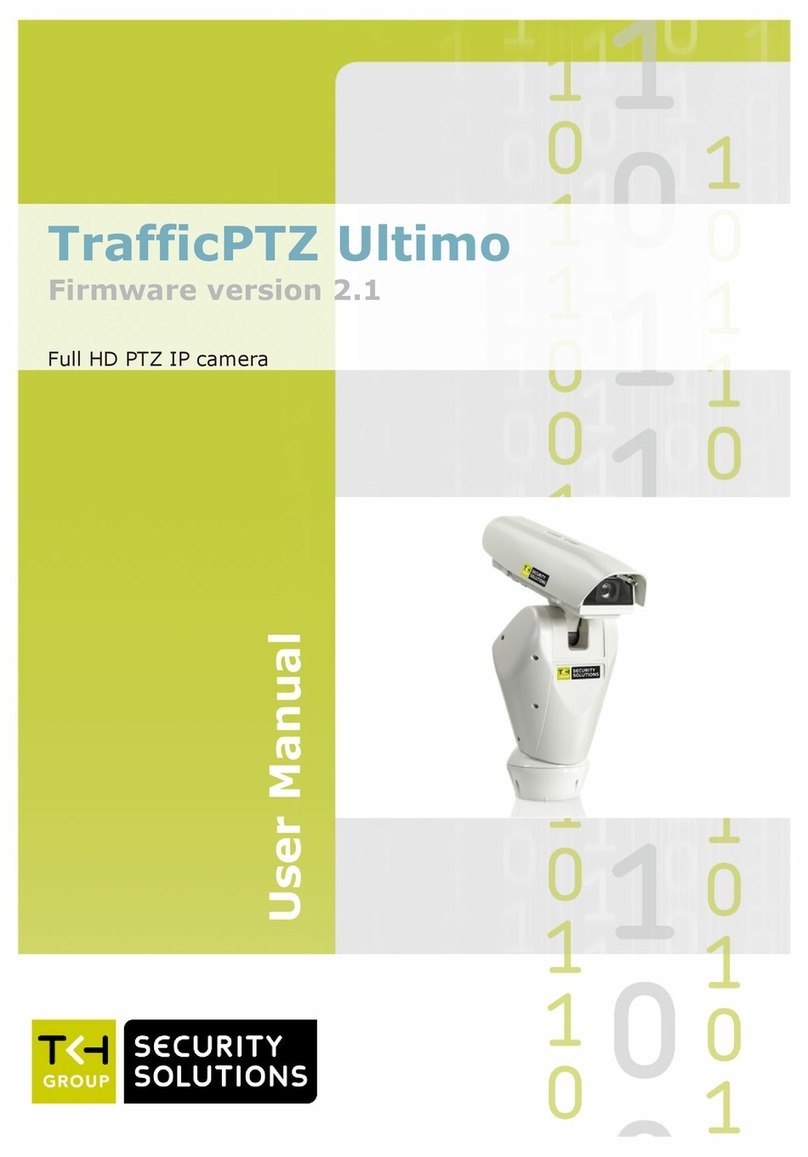
TKH
TKH trafficptz ultimo User manual
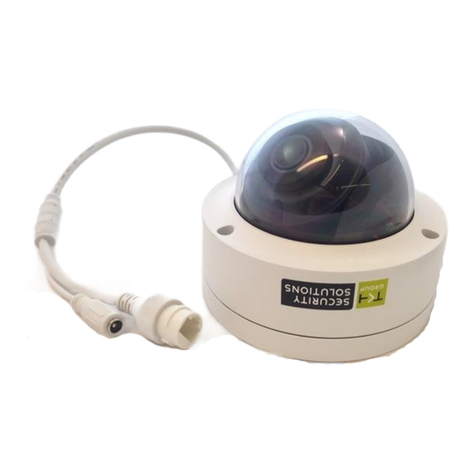
TKH
TKH SIQURA FD002F2-EI User manual
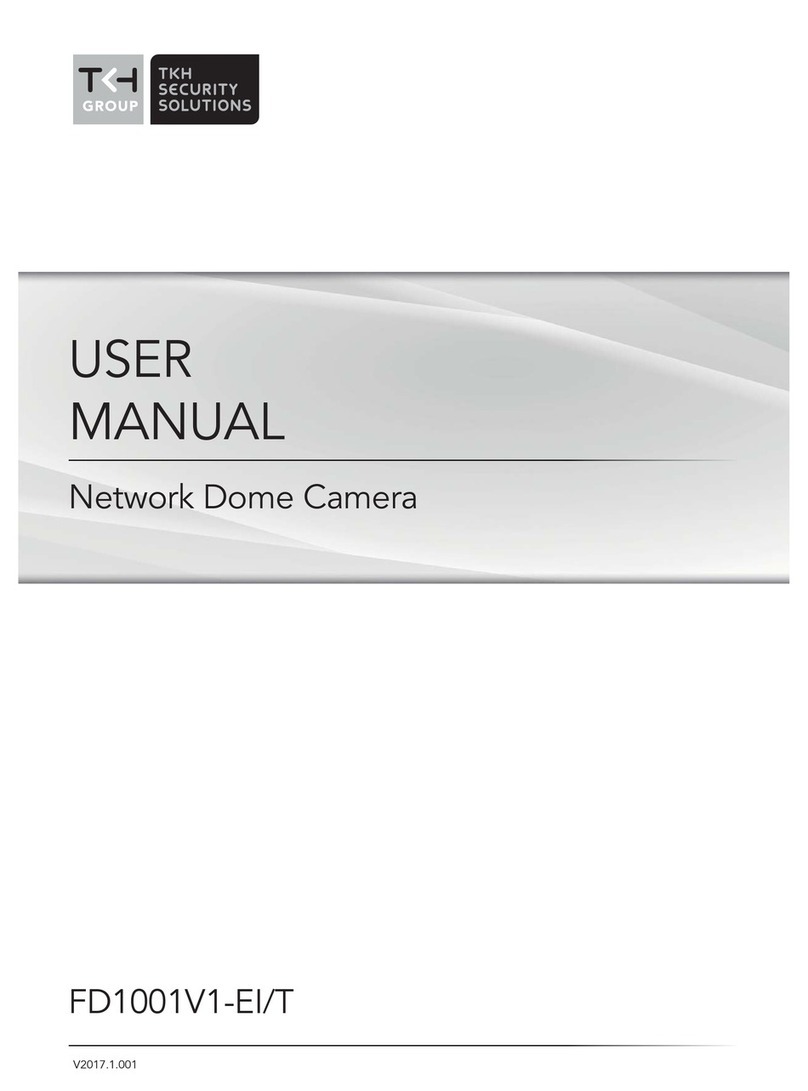
TKH
TKH FD1001V1-EI/T User manual
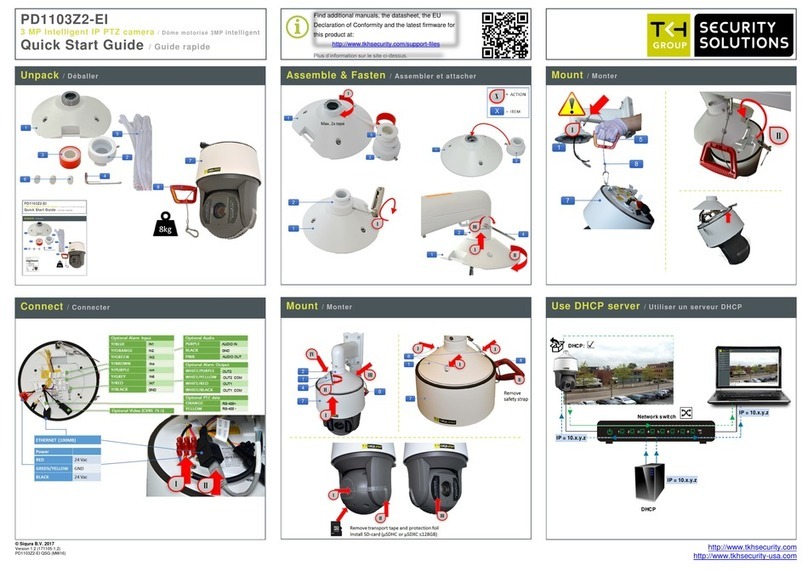
TKH
TKH PD1103Z2-EI User manual
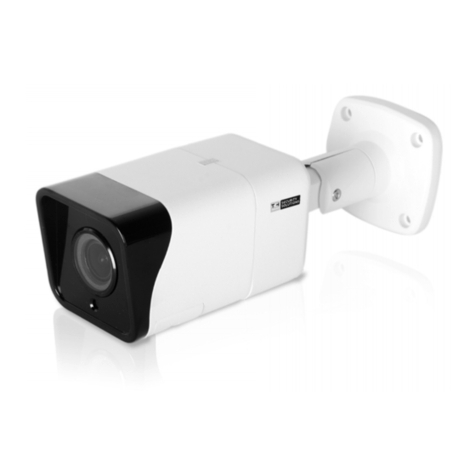
TKH
TKH TKIB41M1S User manual
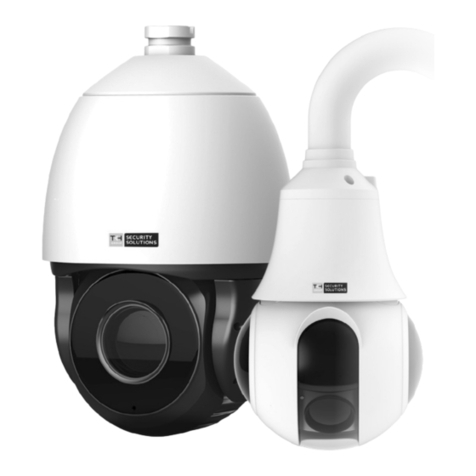
TKH
TKH TKIZ48E12S User manual
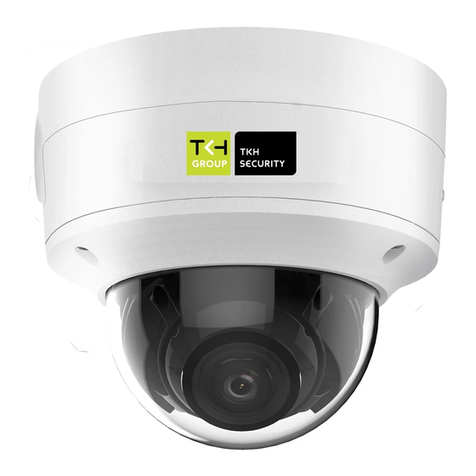
TKH
TKH FD2002v2M User manual
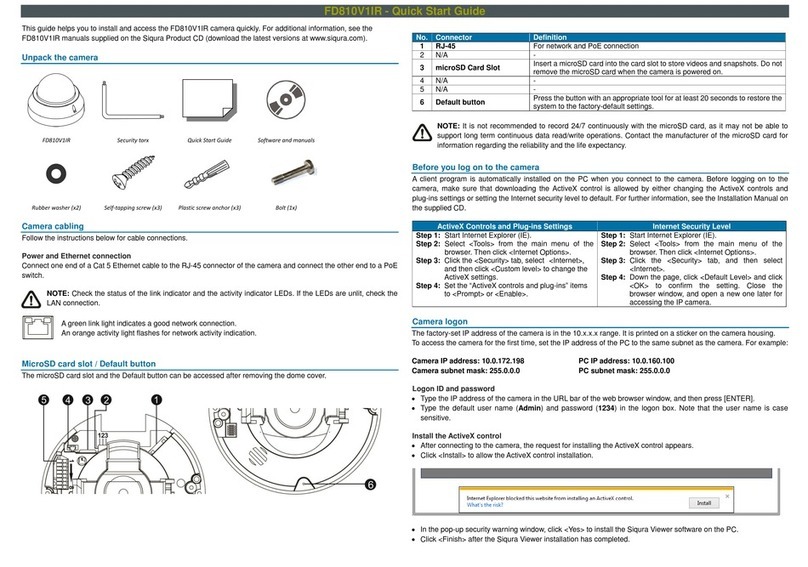
TKH
TKH Siqura FD810V1IR User manual
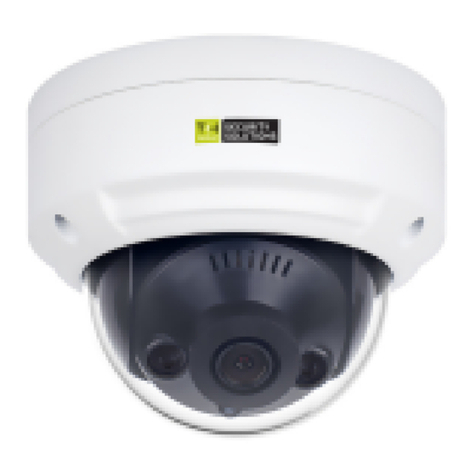
TKH
TKH TKID45F2S User manual
